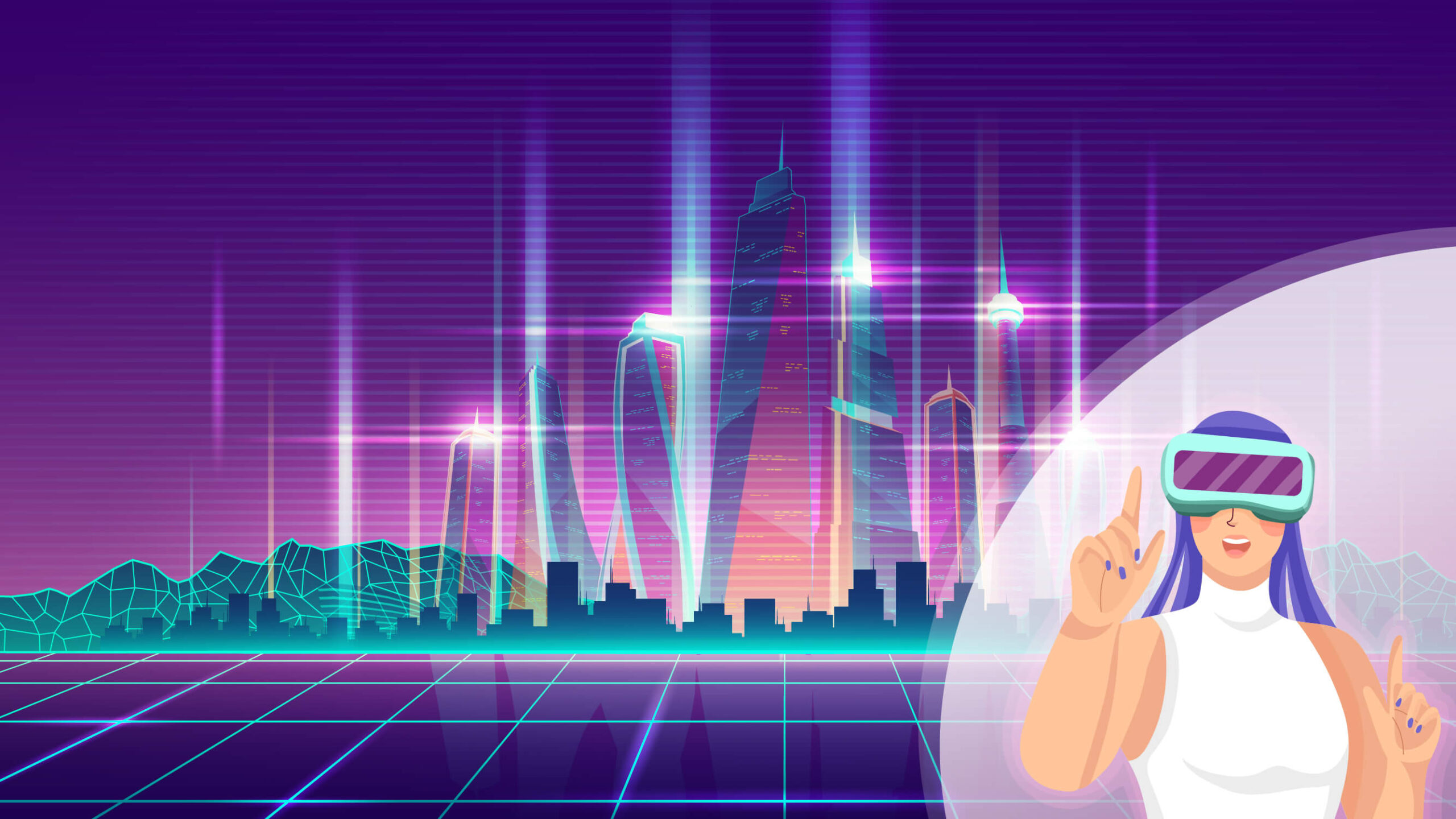You may have heard every tech enthusiastic talking about the metaverse & 3D design. Many experts see it as the future of the internet, where reality collides with real-time 3D worlds. You will find a more recent usage of the word “metaverse” in Spielberg’s Ready Player One movie or even Facebook re-branding to ‘Meta’. So what’s this hype all about?
Currently, Facebook describes the metaverse as “a set of virtual spaces where you can create and explore with other people who aren’t in the same physical space as you.”
What is Metaverse?
The metaverse is an immersive, 3D environment that could soon be a part of our everyday lives. This virtual world is made possible by advances in augmented reality (AR), mixed reality (MR), and virtual reality (VR) technology. Major technology companies like Apple, Google, Facebook, Microsoft, Niantic, and Valve are all developing the technology that will shape the future of the metaverse. Coupled with this is the idea of a virtual economy. A virtual economy is an economy that exists only in a digital world. This can include online games, social media networks, or other digital platforms. It includes all the transactions that take place between people who are buying and selling things in cyberspace. The actual economy, on the other hand, is the economy that exists in the real world, and it includes all the transactions that take place between people who are buying and selling things in person.
So what does the future of the metaverse & 3D design look like? An immense ecosystem of digital world coupled with it’s own demand, supply, economy and interactivity. It will be shaped by the design and technology we use to access it. AR, MR, and VR will all play a role in making the metaverse more immersive and accessible. And as the virtual economy continues to grow, we can expect to see more businesses and entrepreneurs popping up in this new digital landscape.

Metaverse and the future of work
As the metaverse concept begins to incorporate Web3 technology via blockchain technology, the future metaverse will be similar to our real world in many ways and even replace certain real-world activities. Some non-fungible token (NFT) vendors have already enabled their NFTs to be used in certain metaverse games, and more are sure to follow.
An increasing number of NFT enthusiasts are also sensing opportunities to invest in virtual lands on such games and sell or rent them for a price. The future metaverse can also be a huge contributing factor to the growth of the virtual economy, which depends on video games and virtual worlds where disruptions are almost nil. As such, both users and creators gain a lot and this can even increase if non-fungible tokens (NFTs) are incorporated into in-game assets so that decentralization of the virtual economy becomes a reality.
Digital Twin Technology
The Metaverse is a shared, virtual space where people can interact with each other and with digital objects and experiences. One of the most exciting applications of the Metaverse is the concept of the digital twin. A digital twin is a digital replica of a real-world object or system. By creating digital twins of physical objects, we can gain a better understanding of how they work, and how they interact with other objects in the real world. For example, by creating a digital twin of a car, we can learn more about how it works, how it responds to different driving conditions, and how it interacts with other cars on the road. This information can then be used to improve the design of future cars, or to develop new technologies for autonomous vehicles. The Metaverse will also enable new ways of interacting with the digital world. For example, we will be able to create avatars that represent us in the Metaverse.
The role of 3D design in Metaverse
Typically, metaverse creators need 3D design and modeling services for complex projects ranging from virtual reality environments to interactive metaverse scenes. Specialized teams are required to deal with complex 3D designing pipelines with intricate details. The path to the metaverse begins with 3D modelling. 3D models are the foundation upon which the metaverse is built. Without 3D modelling, there would be no virtual worlds, no digital avatars, and no way to explore the infinite possibilities of the metaverse. 3D modelling is the key to unlocking the door to the Metaverse.
Artists use specialized software to create detailed models of environments and characters that can be interacted with in real-time. These models are then imported into platforms like Unity or Unreal Engine, where they can be used to create full-fledged virtual worlds. In order to create high-quality 3D models, artists need to have a strong understanding of principles like lighting, shading, and anatomy. While the learning curve for these can be steep, the rewards are well worth it for those who are looking to create truly next-level experiences in the metaverse.
Links to related articles
As you can see, the metaverse is a vast and ever-growing digital landscape with immense potential. With major tech companies investing in its development, it’s clear that the metaverse is the future. Are you ready for it? In order to prepare for the metaverse you need a partner with deep knowledge and know-how of this evolving field. We at Clapstick Media have worked on numerous 3D projects and have developed a deep understanding. Feel free to schedule an expert consultation to discuss your challenges and ideas. Our teams love to brainstorm on challenging projects and work together to find a solution and design the future.


